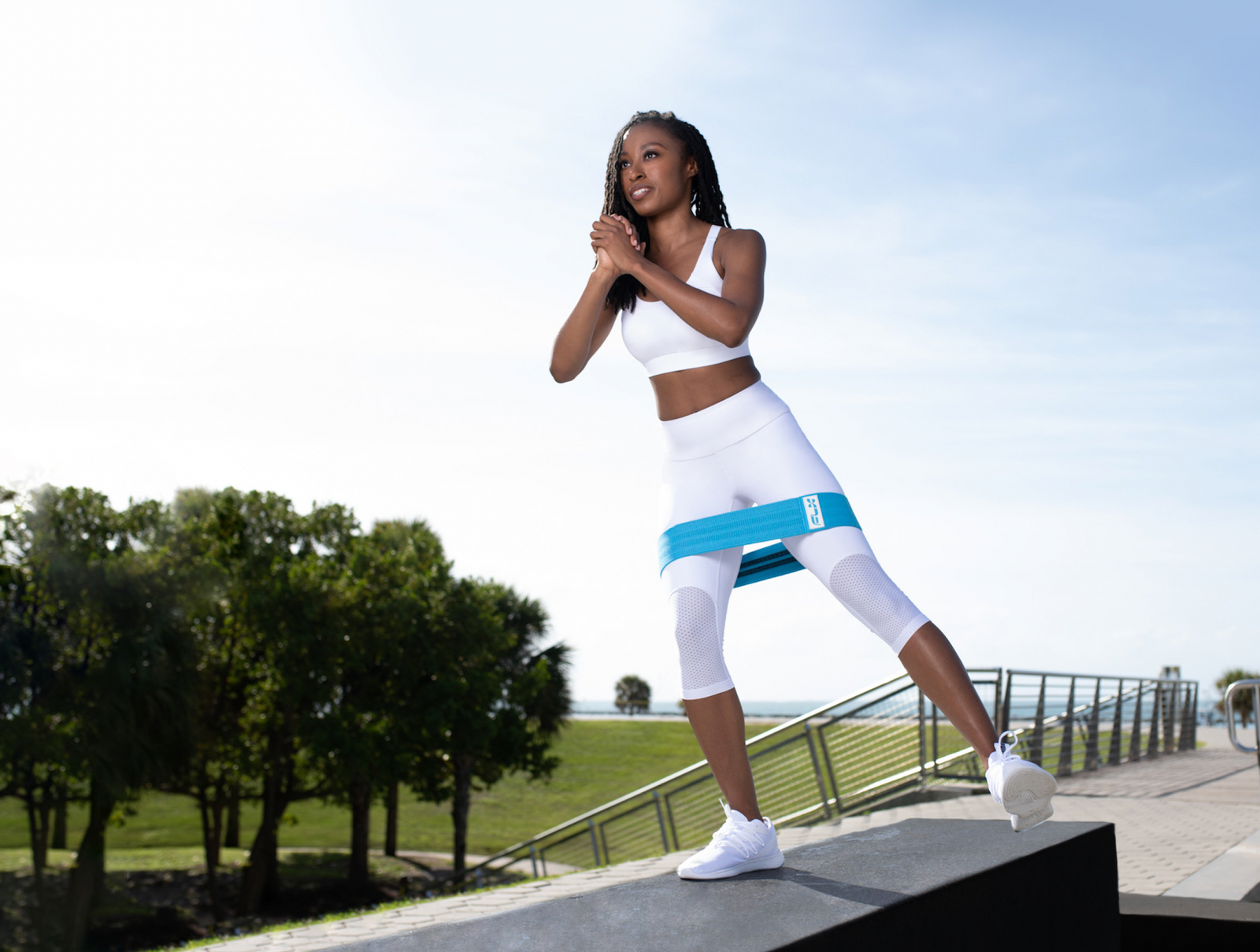How to Increase Power for Leaps, Jumps and Sprinting Sports

Effortlessly the dancer leaps across the stage and floats to the floor in a curtsy.
The basketball forward steps up and releases the ball into the air propelling upward toward the basket and back down to the court.
A gun shot is heard at the 100-meter dash, while the sprinters power out of the starting blocks pushing back into the block.
All of these athletes have something in common - power from the glutes. Any athlete that jumps, leaps, or sprints should focus on the strengthening of the glute complex. The key to power is strength in the back side - most importantly the glutes.
What are the glutes?
The gluteals are three large muscles on the back side of the body. There are three different types:
Gluteus Maximus
Gluteus Medius
Glutes Minimus
The glute maximus is the largest of the three, and although it helps in many movements of the hips, its main action is hip extension, moving the leg behind you. It plays a role in rotation outward of the leg, in and out movements of the leg and extension. Extension is used in walking by propelling the body forward by pulling the leg behind you.
The glute medius and minimus are a team. The glute medius helps keep the pelvis in place while walking because it helps keep the thigh moving outward or abduction. If the glute medius is weak the thigh would drop inward and put uneven pressure on the knee as well as tip the pelvis forward. The glute minimus works with the glute medius in keeping the pelvis stable. By looking at the muscles it’s easier to see how it keeps pressure at the top of the hip.
To increase power, the strength of the muscle is key. Strengthening all whole team is important. This is why side to side and backward movements are key to having a strong backside. The lunges and squats work primarily on the large glute maximus, while the side to side and rotational movements work on the smaller glute muscles. Keep in mind these are all working together. Power to jump, leap, and push off for sprinters also depends on the range of motion. Basic physics allows that propulsion depending on the range of pull back.
Here’s an easy way to think of it. Picture a catapult. The further the swing arm goes back the further the distance of the object into space. To increase power, range of motion is needed.
What’s equally important is the understanding of flexibility. Muscles that are tight or not flexible are generally weaker muscles. If the glutes are weak, they will restrict their opposing movement – i.e., forward bending. As the glutes get stronger, the forward motion will be greater. It's a relationship that works with every joint of the body. Tight muscles need to be strengthened and flexibility improves power output.
Therefore, if you increase the strength in the glutes you will also increase the flexibility of the hip and increased power will be the result.
Here are five simple glute strengthening exercises.
To begin, place the FLX Resistance Band over your knees, around mid-thigh:
- Bridge lift tilt. Start by lying on your back with knees bent, feet hip width distance apart. Slowly lift the hips and tilt the pelvis while keeping the rib cage down for 8-10 counts and then roll the hips back down to the floor. Perform 8-12 reps.
- Bridge lift and march. Start by lying on your back with knees bent. Slowly lift the pelvis and hips upward while keeping the rib cage down. Alternate lifting the foot off the ground 1-2 inches while keeping the hips and pelvis from moving. March 18-20 reps.
- Bridge with side leg lift. Start by lying on your back with knees bent. Slowly lift the pelvis and hips upward while keeping the rib cage down. Lift one foot 1-2 inches off the ground and while keeping hips from moving, slowly move the foot to the side and back to center, working against the FLX Resistance Band. Change feet and perform the side leg move on the other side. Perform 18-20 reps.
- Side-lying clam shell. Lying on your side with legs bent, feet flexed and heels together. Lift and lower the top knee turning out from the hip, keeping the heels pressing together. Perform 12-15 reps on each side.
- Side band walks. Start standing with the resistance band just above or below the knees depending on the tightness of the band. Keep tension in the band and walk steps to the side and then walk back to starting position. Perform 3-4 sets of the walking exercises.




Leave a comment